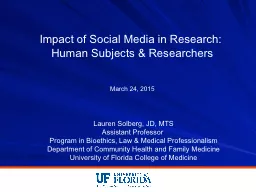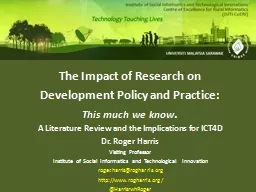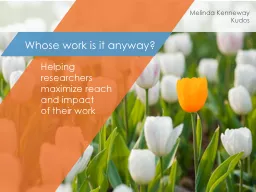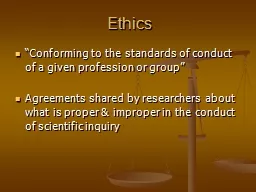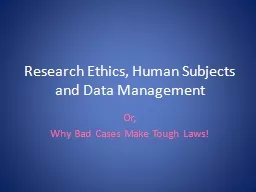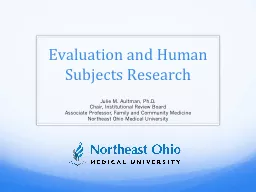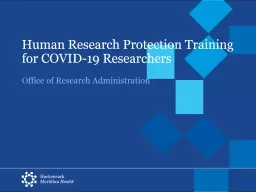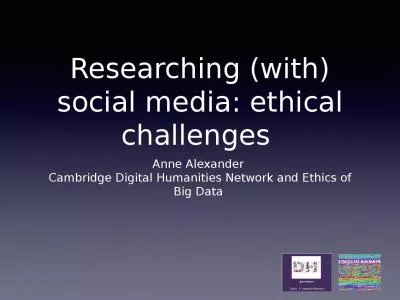PPT-Impact of Social Media in Research: Human Subjects & Researchers
Author : phoebe-click | Published Date : 2018-12-08
March 24 2015 Lauren Solberg JD MTS Assistant Professor Program in Bioethics Law amp Medical Professionalism Department of Community Health and Family Medicine
Presentation Embed Code
Download Presentation
Download Presentation The PPT/PDF document "Impact of Social Media in Research: Huma..." is the property of its rightful owner. Permission is granted to download and print the materials on this website for personal, non-commercial use only, and to display it on your personal computer provided you do not modify the materials and that you retain all copyright notices contained in the materials. By downloading content from our website, you accept the terms of this agreement.
Impact of Social Media in Research: Human Subjects & Researchers: Transcript
Download Rules Of Document
"Impact of Social Media in Research: Human Subjects & Researchers"The content belongs to its owner. You may download and print it for personal use, without modification, and keep all copyright notices. By downloading, you agree to these terms.
Related Documents

